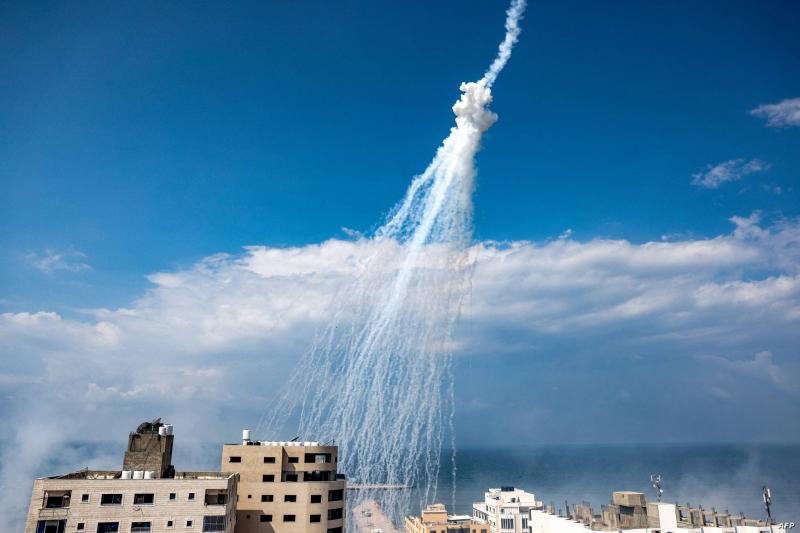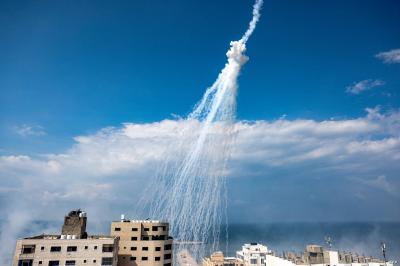A side conversation between Egyptian Minister of Health Khaled Abdel Ghaffar and an Egyptian doctor revealed the nature of the weapon used in the bombing that targeted Jabalia Camp, resulting in a significant number of casualties and serious injuries. The doctor expressed to the Minister of Health his suspicion about the type of weapon Israel is using in its bombardment of Gaza, calling for a forensic team to be present to examine the injuries.
Israel is reportedly using white phosphorus munitions as part of its intense shelling of the Gaza Strip. White phosphorus is a chemically active form of phosphorus that ignites spontaneously upon contact with air, burns intensely, and is difficult to extinguish. Phosphorus munitions have been used since the late 19th century and early 20th century, particularly during World War I and World War II, and their use is prohibited under international law regarding weapons of war.
According to an analysis conducted by the New York Times, Israel dropped at least two bombs weighing 2,000 pounds (approximately 900 kilograms) each during its bombardment of Jabalia Camp in Gaza on Tuesday. This bomb is reportedly the second-largest bomb in Israel's arsenal, according to the American newspaper.
The New York Times notes that Israel's use of such bombs in a densely populated area like Jabalia raises questions about whether the intended targets align with the number of civilian casualties and the destruction caused by its strikes. It is noteworthy that 83 countries, excluding Israel, have signed a commitment to refrain from using explosive weapons in populated areas to avoid harming civilians. The Israeli military has declined to comment on the number and type of weapons used in the attack on Jabalia.




